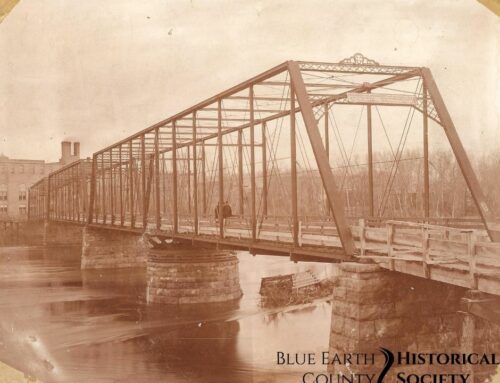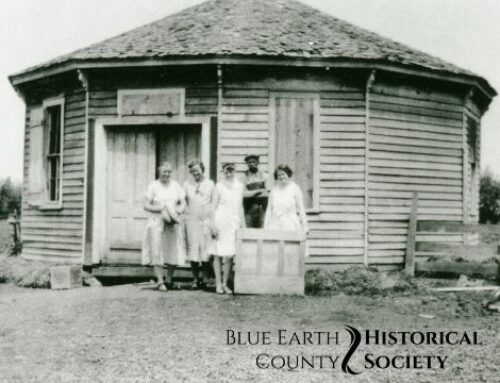Le Ray Township once sported the clever name, “Lake” for several months before being changed by William Cole for his home county in New York. This name was awarded to the township due to the numerous lakes lying within its borders. These plentiful lakes fostered lush forests that clustered around the township’s boundaries. First settlers arrived in 1856 to the majority of the township as sections of the land were part of a Winnebago reservation. Naturally, the new settlers took quickly to the lumber industry. A few mills and a store sprung up; later a school.
One popular historical landmark that has remnants today is the former site for Mankato Mineral Springs. This land was first purchased by Enoch Morse in 1864. He had heard from local Native Americans that natural springs existed on the property and they had healing properties. Mystified by this phenomenon, he quickly bought the property and investigated its worth. After his demise, the land was inherited by his sons; John and Daniel. They too were intrigued by the strange water. Dr. Klivington, a chemist from Minneapolis, was called in to investigate the content of the water, finding to it be extremely unique. Another chemist, Dr. C.W. Drew remarked the water quality was alkaline to a moderate degree of concentration. After these tests were completed, Daniel Morse decided on building a resort nearby to heal the suffering. The water was said to be able to treat diseases concerning the liver, kidneys, bladder, and skin. Instead of a healing resort, they instead built a bottling plant. The shipments were first sent to nearby Mankato where residents immediately took a liking to the new drink. The land site was soon specked with parks and seating for community members. Families would lounge in the areas gazebos and drink water free of charge. Because of growing popularity, it was soon given the name Mankato Mineral Springs. Through time the property slowly switched owners. It seemed as if the buyers were uninterested in expanding the business further. In 1912 it returned to the ownership of Nick Peterson who decided to give up the company. Following this decision cement was built over the spring. Little remains of the site but a small gazebo that once towered over the springs.
In 1870 Eagle Lake village was erected near a plentiful forest. Its first industrial success emerged through wood and lumber but gradually moved to other economic outlets such as a highly successful bobsled manufacturing plant and a cheese factory. 1870 also saw a railroad station completed which was followed by stores and mills. Over the years, there were three different mills in Eagle Lake. The railroad made it easier for people to come to Eagle Lake and with this came churches and a schoolhouse. The village continued to expand, incorporating into a town in 1902, to become where it is today, and it remains an important and exciting hub for all of those living in the Le Ray Township.





Where is the springs?
Our Research Center has responded to you with an email. The Spring was located in the Ne 1/4 of the SW 1/4 of section 29 of Le Ray Township.